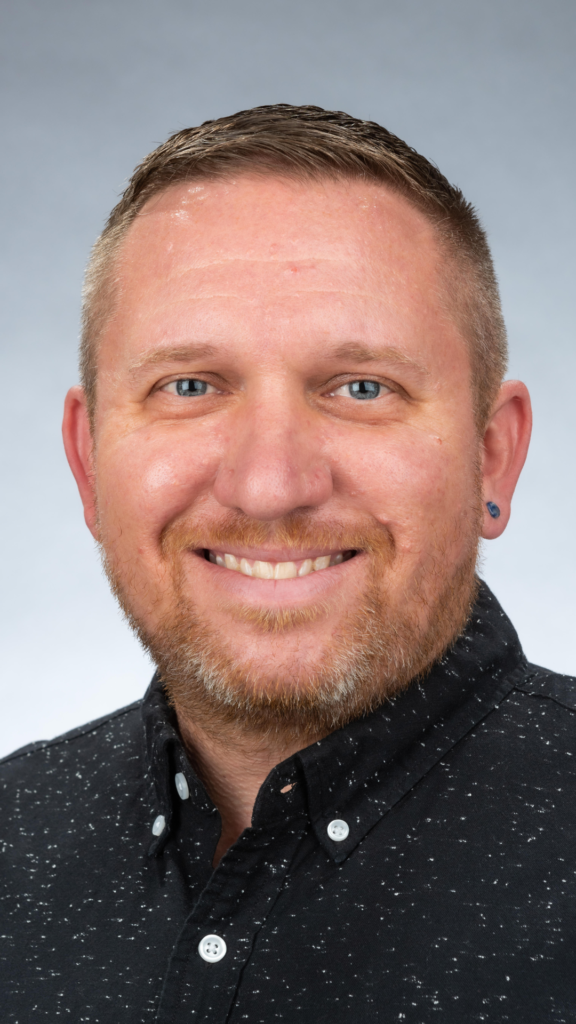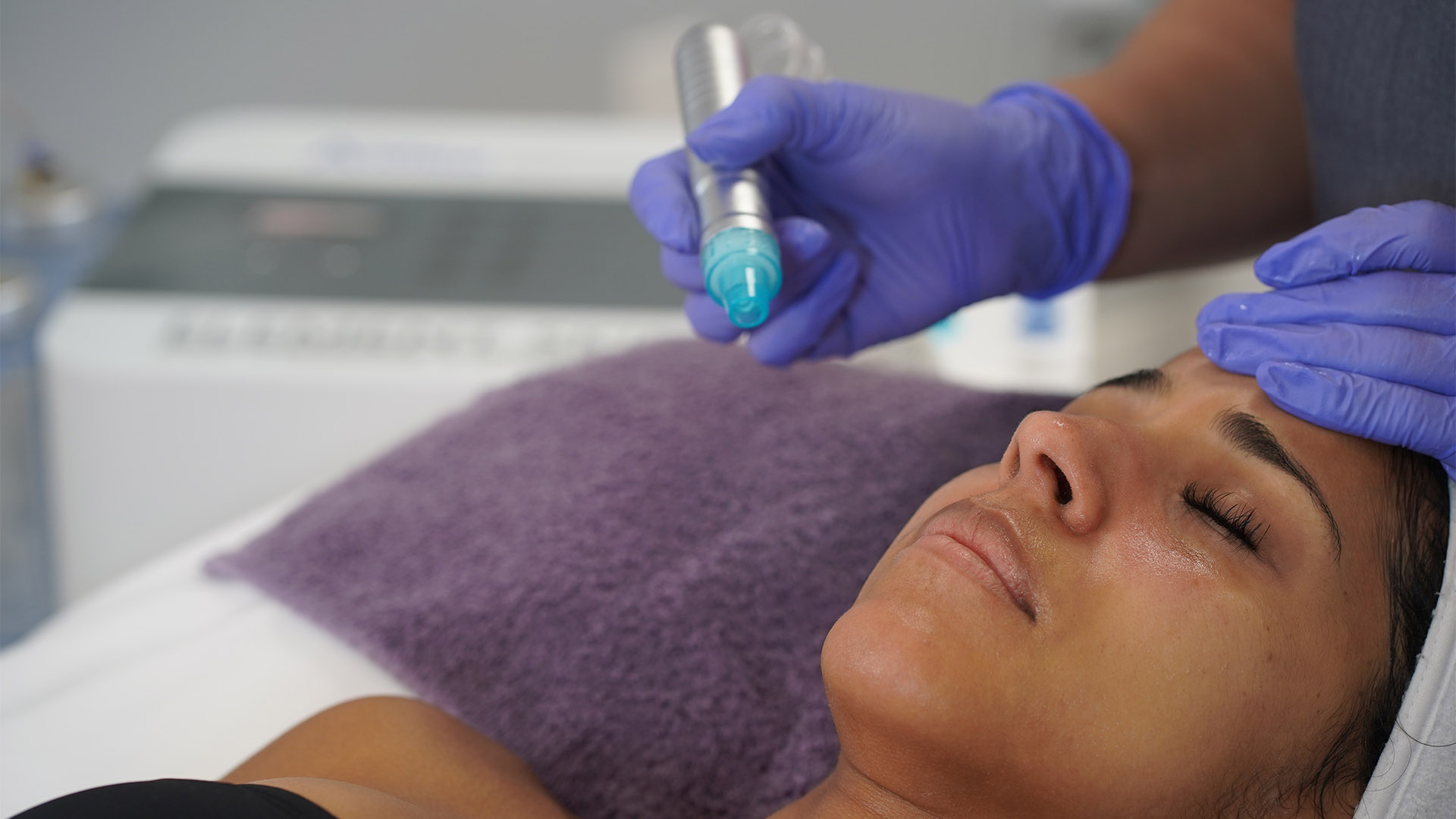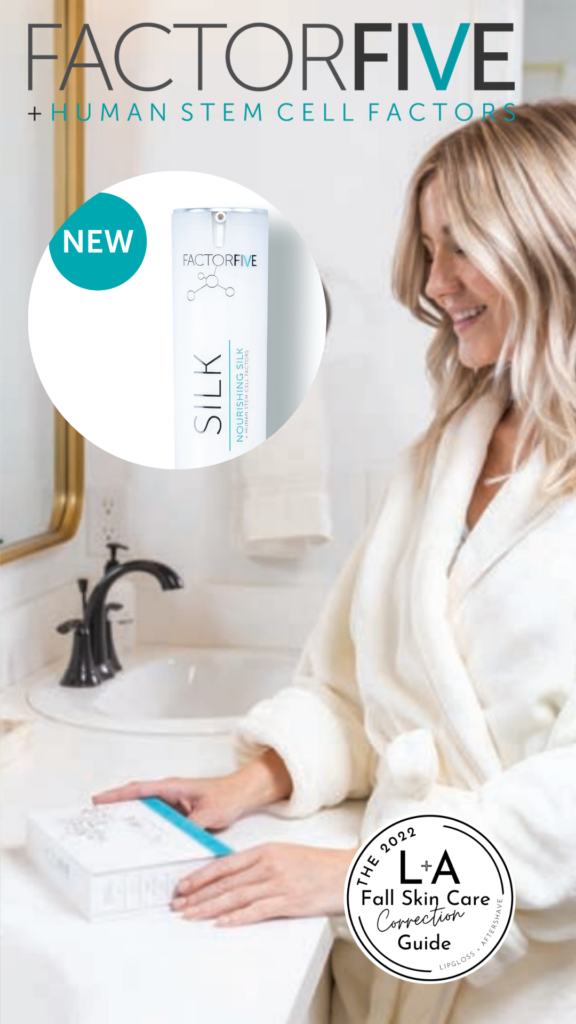FACTORFIVE, powered by ethically derived human stem cells, explains how stem cells should be a go-to post resurfacing product for skin rejuvenation!
Resurfacing Skin Is Inflicting A Controlled Wound To The Skin
Skin resurfacing can be done in a multitude of different ways, including using laser techniques, fractional laser photothermolysis, intense pulse light, photodynamic therapy, chemical peels, dermaplaning, and microdermabrasion.
While these techniques can reduce facial wrinkles, scars, and blemishes, they have different methods of action; some use lasers, and others use visible light, and chemical and manual exfoliation. However, they do have one thing in common: they wound the skin to promote beneficial healing. You’re probably thinking: why would I want to wound skin? The answer has a lot to do with the specialized organ that surrounds all of us called the skin.
Anatomy Of Skin
The skin is composed of three major layers: the epidermis, dermis, and hypodermis. The outermost layer of the epidermis is composed of squamous cells, which are constantly being shed. Below that are basal cells and melanocytes, which give your skin color. The epidermis is separated from the deeper layer of the dermis by a basement membrane that is made up of extracellular matrix (ECM) proteins that are essential for normal skin biology. Importantly, essential proteins and growth factors are tethered in this membrane that are important for how keratinocytes function (Pozzi et al., 2017; Randles et al., 2017). Below the epidermis lies the dermis, which is composed of blood vessels, lymphatics, hair follicles, sweat glands, nerves, and fibroblasts. Surrounding all of these cells is an ECM component known as collagen, which gives the skin flexibility and strength. Finally, below the dermis, lies the hypodermis. This layer is mostly composed of subcutaneous fat and a network of collagen.

Contribution by Dr. David Stachura
Dr. David Stachura has a Ph.D. from the University of Pennsylvania in Molecular Biology and performed his postdoctoral studies at the University of California San Diego. His research focuses on adult stem cell generation and homeostasis. Dr. Stachura is a Professor at California State University and leads a team of scientists at FACTORFIVE Skincare, using human stem cells to improve people’s lives.
Ok, so how is all of this affected during skin resurfacing? Well, basically skin resurfacing causes wounds. And while the methods vary, in general, the outer layer of skin (the epidermis) is destroyed and the dermis underneath is heated up. This heating causes the cells in the dermis to make more collagen. Some procedures can even penetrate into the dermis. These procedures lead to new and remodeled collagen formation by the surrounding fibroblasts and the tightening of existing collagen. This fills fine lines and wrinkles, improving skin tone. All of this production and deposition of collagen results in better-looking, healthy skin post-treatment.

Build a better spa experience for your clients with
DermaJEM’s Spa Equipment and Hydroserums
Estheticians love DermaJEM’s equipment because they’re easy to use and they deliver real results to keep your clients coming back for more treatments.
Learn more about how DermaJEM can elevate your beauty business.
The Role Of Stem Cells In Wound Healing
But how can we improve on that wound-healing process? Normally, stem cells help repair skin wounds by secreting essential proteins and growth factors to aid healing. However, as we age, our stem cells’ ability to secrete these important growth factors and cytokines decreases (Keyes and Fuchs, 2017). These special cells are known as mesenchymal stem cells (MSCs), which are adult stem cells that have the capacity to differentiate into bone, cartilage, muscle, and fat. MSCs can be isolated from bone marrow, adipose tissue (fat), placenta, and umbilical cord. Numerous studies over the past 30 years have shown the therapeutic benefit of treating clinical conditions with MSCs (Pittenger et al., 2019; Rangatchew et al., 2020).
As mentioned previously, MSCs reside in several body tissues; the most easily collected and widely studied are from fat, which is usually discarded after medical procedures. Scientific evidence has determined that adipose-derived MSCs (ADMSCs) have broad anti-inflammatory and immunomodulatory properties, and their main beneficial effects are mediated by the proteins they secrete (Sagaradze et al., 2019). Thus, collecting the media after MSCs are cultured in the laboratory, known as conditioned media (CM), is a method of capturing the multitude of these secreted growth factors and cytokines. Cosmetics containing human stem cell CM improve skin health, accelerate skin regeneration, and delay aging (Kim et al., 2020). These secreted growth factors and cytokines can also be collected and incorporated into topical products for post-treatment healing. The damaged skin can use these exogenous growth factors to accelerate collagen deposition and re-epithelization. In other words, the CM from stem cells should improve skin repair, giving you a shorter healing time and a better overall cosmetic outcome.
Introducing FACTORFIVE’S Nourishing Silk with Human Stem Cell Derived Growth Factors

FACTORFIVE has just released the Nourishing Silk with Human Stem Cell-Derived Growth Factors. Now you can help clients obtain visibly soothe, plump, and softer skin after any professional skin procedure with this hydrating silk that fights the FIVE signs of aging: wrinkles, sun spots, skin laxity, thickness, and uneven skin texture. FACTORFIVE’S Nourishing Silk combines human stem cell-derived growth factors with soothing ingredients like aloe vera and green tea extract to help nourish the skin. It’s 100% fragrance and silicone free. It’s formulated with humanity in mind–without parabens, mineral oil, sulfate detergents, phthalates, urea, DEA, or TEA–and not tested on animals.
Learn More About FACTORFIVE
References
Keyes BE, Fuchs E. Stem cells: Aging and transcriptional fingerprints. J Cell Biol. 2018 Jan 2;217(1):79-92.
Kim, H.J., Jung, M.S., Hur, Y.K. et al. A study on clinical effectiveness of cosmetics containing human stem cell conditioned media. biomed dermatol 4, 9 (2020).
Pittenger MF, Discher DE, Peault BM, Phinney DG, Hare JM, Caplan AI. Mesenchymal stem cell perspective: cell biology to clinical progress. npj Regenerative Medicine (2019) 4:22.
Pozzi A, Yurchenco PD, Iozzo RV. The nature and biology of basement membranes. Matrix Biol. 2017; 57–58: 1-11
Randles MJ, Humphries MJ, Lennon R. Proteomic definitions of basement membrane composition in health and disease. Matrix Biol. 2017; 57–58: 12-28
Rangatchew F, Vester-Glowinski P, Rasmussen BS, Haastrup E, Munthe-Fog L, Talman ML, Bonde C, Drzewiecki KT, Fischer-Nielsen A, Holmgaard R. Mesenchymal stem cell therapy of acute thermal burns: A systematic review of the effect on inflammation and wound healing. Burns 2020.
Sagaradze G, Grigorieva O, Nimiritsky P, Basalova N, Kalinina N, Akopyan Z, Efimenko A. Conditioned Medium from Human Mesenchymal Stromal Cells: Towards the Clinical Translation. Int J Mol Sci. 2019 Apr; 20(7): 1656.

